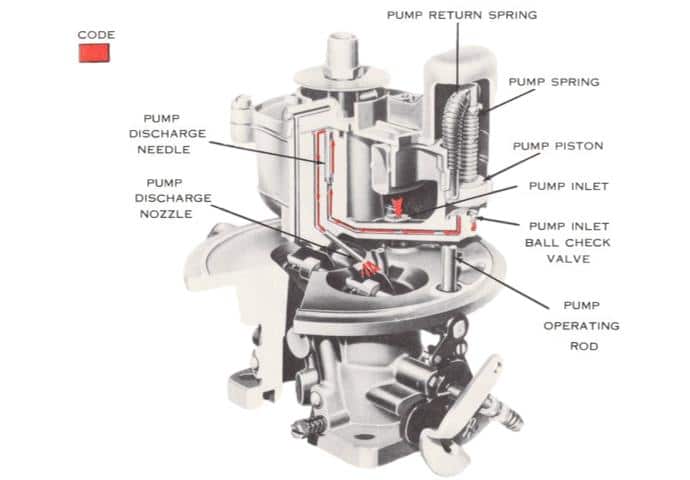
Sometimes referred to as a Holley Teapot
As the throttle opening is increased upon acceleration, the air flow through the carburetor responds almost immediately. There is, however, a brief interval before the fuel, which is heavier than the air, can gain speed and maintain the desired balance of fuel and air. It is during this interval that the accelerating pump operates, supplying fuel until the other systems can provide the proper mixture.
The accelerating pump is connected by the pump link to the throttle lever and is actuated by throttle movement. When the throttle is closed, the pump piston moves upward, drawing fuel from the float chamber through the pump inlet and into the pump chamber. The pump inlet check valve opens to permit fuel to enter the pump chamber, and closes to prevent a reverse flow of fuel when the pump is operated. When the throttle is opened, the pump piston moves downward, forcing fuel through the pump discharge passage to raise the pump discharge needle. The fuel then flows around the pump discharge needle and out of the pump discharge nozzle into the air stream entering the venturi. A slot in the pump piston stem allows the pump operating rod to overrun the pump piston stem, compressing the pump spring when the throttle is opened suddenly. This overrun causes the pump piston to be subjected to the pressure of the compressed pump spring, thereby giving a prolonged discharge of accelerating fuel.
A larger or smaller accelerating pump discharge can be obtained by varying the position of the pump link in the holes in the throttle lever.
